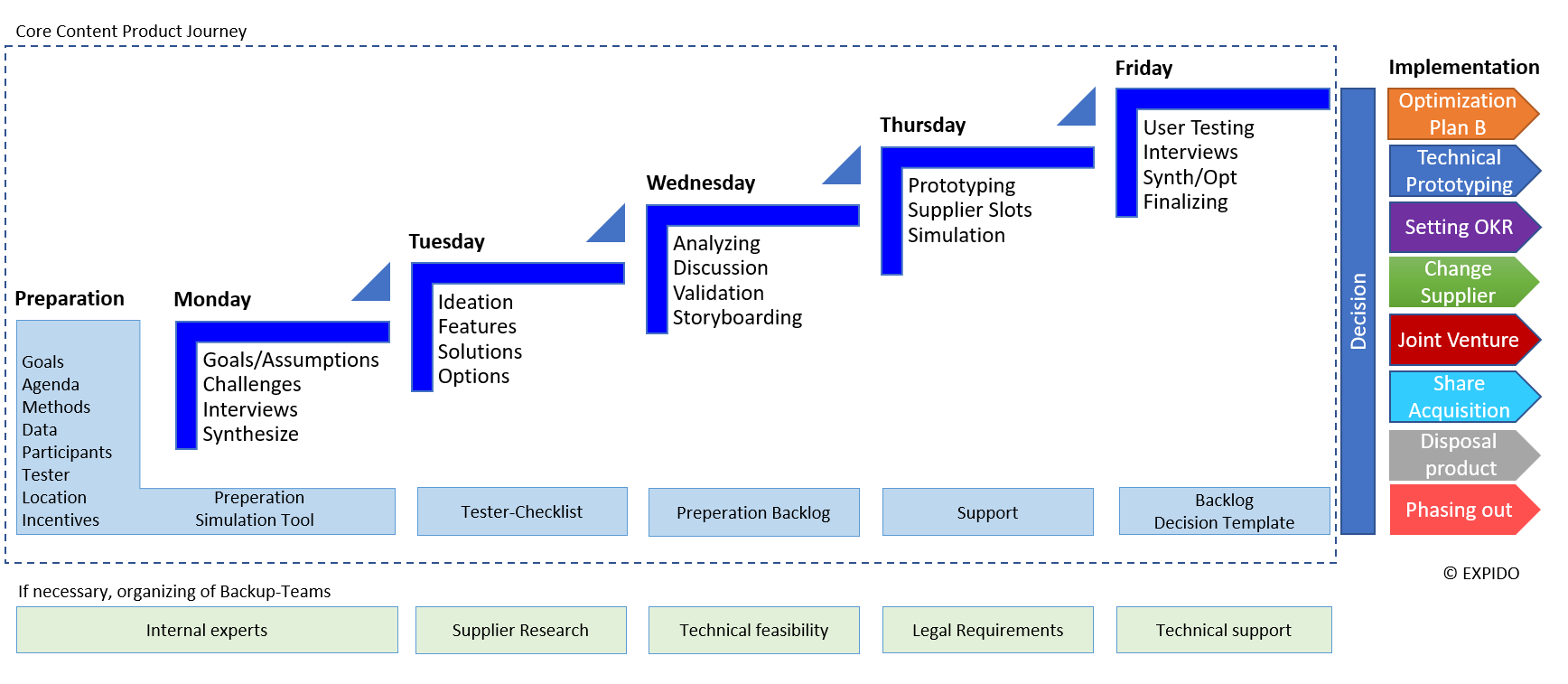The management is not satisfied, or the supervisory board has asked for reliable earnings prospects? A product must now be brought into the profit zone sustainably and as quickly as possible. These challenges can be met with a product journey. The Product Journey can be used in just as many different ways as the complexity of products and services.
There are multi-faceted reasons why prototype is unsatisfactory or products are unsuccessful. In the end, sales can only cover the costs insufficiently or not at all. In the end, the result of the product portfolio, the sales team and the whole company is negatively affected. The product journey developed by EXPIDO is focused on solving this situation. Course correction is possible within a single week. The possibilities of the Product Journey are just as varied as the complexity of products and services.
The Product Journey is basically applicable to the whole range of products. It is based on Design Thinking and the Sprint Method of my network partner Jake Knapp, who developed it for Google Venture. What was decisive for us was the consideration of the complexity of products in this format. The wide range of improvement possibilities allows a first look at the variety of product components and their interactions.
Fig. 1: What facets can a product have?
“Developing ideas, concretising solutions and having them validated by customers on the basis of prototyping and tests; creating a backlog and implementation concept that can deliver a product journey. The customer benefit is confirmed. The implementation path is clear. The result is a saleable product whose customer benefit is confirmed and all this in a single week is fantastic”.
How should this work? A product journey will bring the best results if the know-how of many internal experts from different functions is brought together. Practice has shown that a heterogeneous team of seven to eight people is ideal for the Product Journey. It is important that all necessary fields of competence are represented. Marketing, sales, purchasing, manufacturing, logistics and product management are the top priority here. If necessary, backup teams in the background can be very helpful.
The success of a product journey depends on several factors. These can all be controlled relatively easily. Very relevant is the preparation. It contains – if the information is not already available:
- Expert interviews to collect and deepen existing knowledge
- Customer interviews to clarify demand, needs and requirements
- Other research (eg supplier talks, contract analysis, …)
- If necessary, a two-hour dress rehearsal prior to the product journey can be beneficial.
 Fig. 2: Process and core content of a product journey
Fig. 2: Process and core content of a product journey
Sometimes groundbreaking progress can be made
During a Product Journey there are sometimes interesting insights. On Monday afternoon, during the synthesis, it can become clear that the previous concept or framework no longer fits. All further steps in the next days will be adjusted accordingly. This is precisely how innovations sometimes emerge that cannot be copied and that represent a unique selling proposition for years to come.
An intensive week ends on Friday with user testing. Here, real customers give feedback on the solution approach. The team still has the opportunity to discuss this feedback and to incorporate optimizations into the decision template. The recommendation contained in this can have a wide range (see Figure 2). It ranges from the backlog for the completion of the product to the sale and discontinuation of activities. In principle, it is ensured that the recommendation is comprehensively validated and provided with a customer vote.




